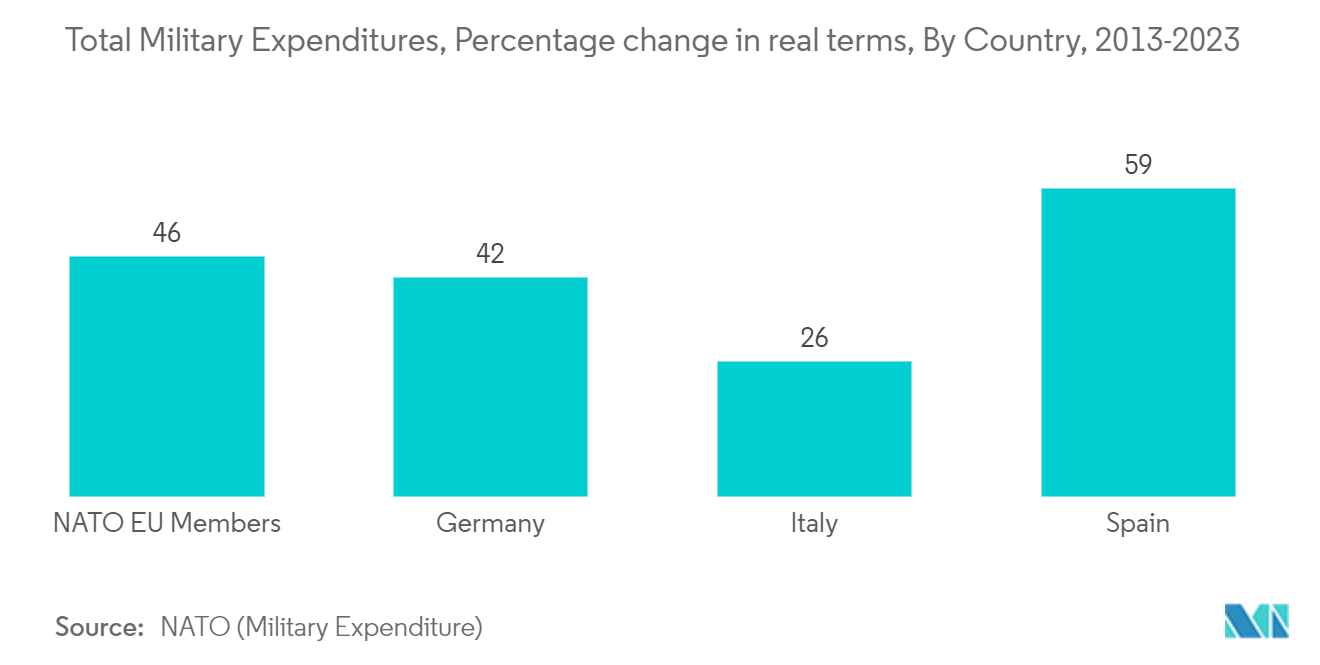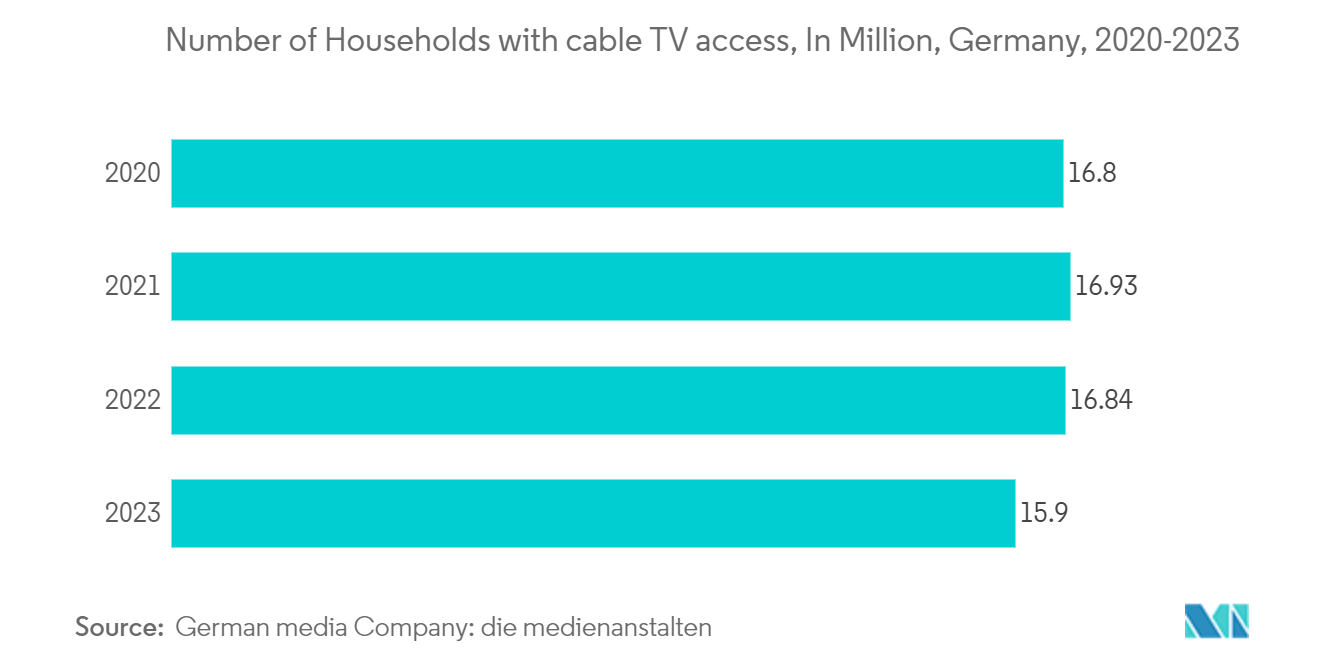Market Trends of EMEA Satellite Antenna Industry
The Segment for Flat-panel Antennas is Expected to Witness the Highest CAGR
- Due to their compact size and advanced technology, there is a growing demand for flat-panel antennas in the EMEA region. They are used in marine connectivity to facilitate high-speed Internet and communication service to ships and offshore platforms. These antennas are compact and less susceptible to motion and harsh maritime environments, which ensures reliable connectivity.
- Europe's military operations increasingly rely on satellite communications (SatCom) and communication and information system services (CIS) for their communication, command, and control needs. These services facilitate the connection of EU commanders with forces in remote regions, allowing efficient mission and task management. Flat-panel antennas are pivotal, ensuring secure, high-bandwidth communications vital for tactical operations.
- According to NATO, military expenditures increased by 46% in EU countries during the last 10 years, four times faster than national income. Countries like Germany, Italy, and Spain witnessed increased allocation of resources to bolster their military capabilities, embrace new technologies, and enhance military-related infrastructures.
- Many market players are investing in developing solutions for improving satellite military communication. For instance, in January 2023, the Belgian Ministry of Defence announced a 15-year deal with Airbus for tactical satellite communication services. Under this agreement, the Armed Forces will leverage Airbus's UHF (Ultra High Frequency) military communication channels, which are part of a payload hosted on a commercial telecommunications satellite crafted by Airbus.
- Flat panel antennas allow extending internet connectivity to rural and underserved areas. They can provide broadband access in areas that do not support infrastructures. Many NGOs and government authorities in Africa are deploying flat panel antennas to deliver internet services to remote villages and schools. They also facilitate media companies operating in the EMEA region to take advantage of flat panel antennas, which allow live broadcasting from remote locations, such as featuring crucial news events, sports events, or outdoor productions efficiently.
- Satellite flat-panel antennas stand out for their capacity to surmount geographical obstacles, ensuring dependable connectivity in remote or demanding settings where conventional infrastructure proves unfeasible or too costly. These antennas leverage satellite communications as a crucial link for communities and industries in locales with scant terrestrial coverage, including rural zones, offshore platforms, and disaster-affected regions.

Germany Holds the Largest Market Share
- Germany has a strong aerospace and satellite communication industry. The country is supported by several manufacturers, service providers, and technology companies. This is majorly driven by the increasing demand for satellite communication services across various sectors, which include telecommunication, broadcasting, defense, and research.
- The demand for broadband communications is growing in Germany. This demand drives the need for connectivity among users on aircraft, ships, and vehicles, including first responders. These platforms necessitate uninterrupted connectivity throughout their journeys, often traversing underserved areas within major cities and sparsely populated regions. These trends are expected to bolster the market's growth prospects.
- German companies are increasingly turning to modern solutions to enhance their offerings. For instance, in July 2023, European Space Imaging (EUSI), Europe's provider of Very High Resolution (VHR) satellite imagery, made a significant investment in its ground station at the German Aerospace Center (DLR) near Munich. This upgrade not only enhanced EUSI's image delivery speed and efficiency but also cemented its reputation as a leading provider of satellite imagery technology in Europe.
- According to Die Medienanstalten (German Media company), DTH satellite and cable TV continue to be the primary TV reception methods in Germany. DTH satellite TV service is consumed by 16.4 million households, accounting for 42% of all TV households, a marginal decrease from 43% in 2022. A cable TV subscription was used by 15.9 million households, corresponding to 41% penetration (2022: 43%), propelling the market for satellite antennas in the country.
- Additionally, companies such as HughesNet, Viasat, and other emerging LEO satellite providers like Starlink offer internet services via satellite, enabling streaming of OTT content in remote areas. As per data, TV reception via the Internet (OTT) was opted by 3.1 million households in 2023, an increase from 6% to 8% of households compared to 2022.
- Germany's Bundeswehr, the country's armed forces, announced plans for an independent multi-satellite communications system. On November 9, 2023, German Defense Minister Boris Pistorius emphasized the nation's need to mature in its security policies. In addition to its standalone system, Germany aims to align its military needs with the EU's upcoming IRIS² (Infrastructure for Resilience, Interconnection & Security by Satellites) satcom constellation, particularly leveraging its LEO (low-Earth orbit) services.


